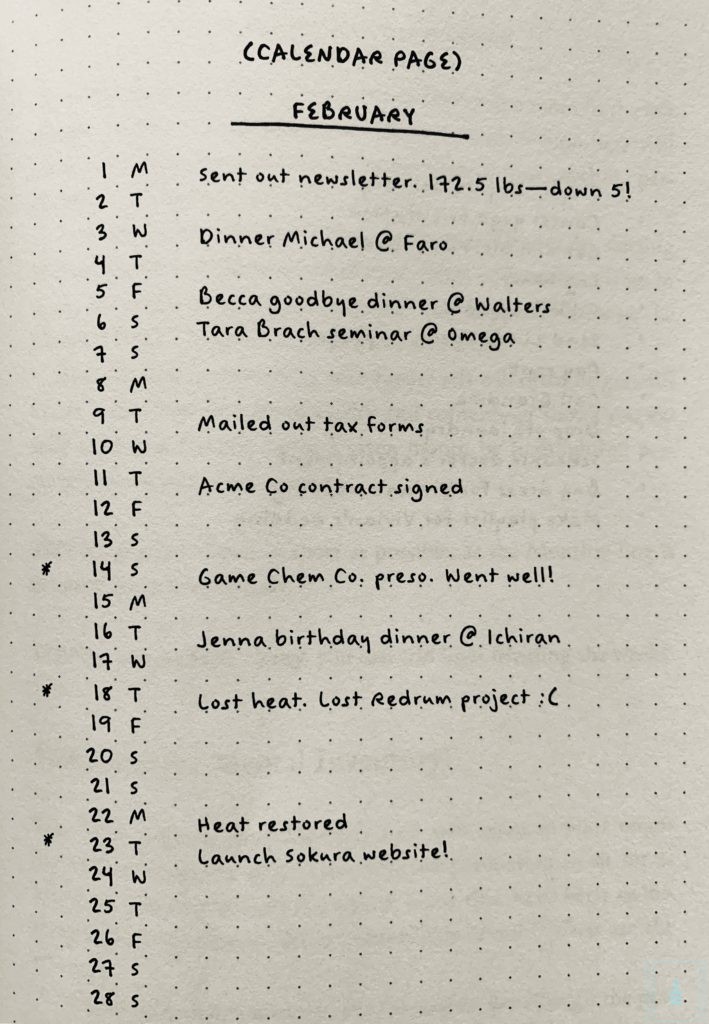In April, I made a decision to move from the Rhodia Goalbook to the Leuchtturm. Long story short, I wasn’t motivated to use my bullet journal because I didn’t like a few things about the Goalbook.
I wanted to copy the previous months from the Rhodia to the
To address that, I devised a plan to summarize and simplify the process which I used and talk about in my March Wrap Up blog post.
- Read: March Wrap-Up
I shared this idea on Instagram and was surprised with the feedback that I received so I decided to write a separate blog post about it.
The Idea
I came across the idea of a monthly recap while I was bullet journaling with a friend of mine. See, she didn’t use her bullet journal everyday because she doesn’t always have time to sit down and journal. When she does have time to write, she recounts the events that had happened on the days where she wasn’t able to write on her bullet journal. I asked her why she preferred to write them as a “recap” instead of writing daily logs for the days she missed. She said that this was her way of telling herself that “I didn’t journal yesterday” or “I have time to journal today so let me try to recall what happened in the past couple of days”.
I thought that this was brilliant and a really a great hack for people who aren’t consistent with bullet journaling.

Daily recaps reminded me of the recap sequences that we see before an episode airs.

How to Use a Recap Sequence in Your Bujo
Okay – I’m calling this the Recap Sequence.
It’s a collection page that resembles the classic monthly log. In a recap sequence, you will list down important milestones, events, or information on the date of its occurrence/acquisition.
Recaps are written in past tense because you will be logging past events like:
- “Paid rent”
- “Changed Twitter password”
- “Purchased a new notebook”
- “Got my hair dyed”
It’s essentially how Ryder describes monthly logs and also how he uses it. The monthly logs were designed to act as an overview or summary of the month so that you could easily scan through significant events in a certain month.
Nothing is set in stone, so I prefer to log Events only after they happen. That way, the Monthly Log’s Calendar page acts like a timeline.
– Ryder Carroll, The Bullet Journal Method

After creating your spread, go back to your weekly and daily logs and check which of these bullets are the major highlights of a they day. Once you’ve identified it, you should write it on the monthly recap page.
You’re not required to write on every line of this page – not all days are eventful, to be honest.
The recap should be minimalist in design because this page is merely a summary of your past month.

This is particularly helpful if you have a different type of monthly layout. Let’s say you prefer monthly log that’s dedicated for appointments and meetings. With these layouts, you wouldn’t have ample space a daily summary so having a monthly recap page would be useful.

How I Used the Recap Sequence in my Bujo
As I’ve mentioned, I used the recap sequence to summarize key events and milestones from my previous notebook. I read through each month and logged every single information that I believed was worth keeping.
I had to review the past months thoroughly because I wanted to make sure that I had written every thing important on the recap.

There are quite a number of blanks on my recaps. I have a lot of items in my daily logs but not all of them made the recap sequence spreads. Some of the bullet points in my past journal were “out of sight out of mind” items. Let’s take the task bullet “buy popcorn” for example. At the time of writing, it was a task that I had to fulfill that day but as I was doing my recap, I had to think “is this significant enough for me to list down?” (the answer is no).

As I was inevitably reviewing the past months, I also had a clear picture on how I would want to use my monthly log from now on – which is to treat it like a timeline (which is really how the monthly log was designed). Then again, if you are already using the monthly log the way Ryder does, then you might not need to do this.
The Recap Sequence can be used monthly, quarterly, or even bi-annually. I think this is great for bullet journalists who check in on themselves once in a while to see if they are on track with their goals or if their actions are lining up to their goals.
Amazon Disclosure
Rediscover Analog is a participant in the Amazon Services LLC Associates Program, an affiliate advertising program designed to provide a means for sites to earn advertising fees by advertising and linking to Amazon.com







